Year 3
The English curriculum is built around the three interrelated strands of language, literature and literacy. Teaching and learning programs should balance and integrate all three strands. Together, the strands focus on developing students' knowledge, understanding and skills in listening, reading, viewing, speaking, writing and creating. Learning in English builds on concepts, skills and processes developed in earlier years, and teachers will revisit and strengthen these as needed.
In Years 3 and 4, students experience learning in familiar contexts and a range of contexts that relate to study in other areas of the curriculum. They interact with peers and teachers from other classes and schools in a range of face-to-face and online/virtual environments.
Students engage with a variety of texts for enjoyment. They listen to, read, view and interpret spoken, written and multimodal texts in which the primary purpose is aesthetic, as well as texts designed to inform and persuade. These encompass traditional oral texts including Aboriginal stories, picture books, various types of print and digital texts, simple chapter books, rhyming verse, poetry, non-fiction, film, multimodal texts, dramatic performances and texts used by students as models for constructing their own work.
The range of literary texts for Foundation to Year 10 comprises Australian literature, including the oral narrative traditions of Aboriginal and Torres Strait Islander Peoples, as well as the contemporary literature of these two cultural groups, and classic and contemporary world literature, including texts from and about Asia.
Literary texts that support and extend students in Years 3 and 4 as independent readers describe complex sequences of events that extend over several pages and involve unusual happenings within a framework of familiar experiences. Informative texts include content of increasing complexity and technicality about topics of interest and topics being studied in other areas of the curriculum. These texts use complex language features, including varied sentence structures, some unfamiliar vocabulary, a significant number of high-frequency sight words and words that need to be decoded phonically, and a variety of punctuation conventions, as well as illustrations and diagrams that support and extend the printed text.
Students create a range of imaginative, informative and persuasive types of texts including narratives, procedures, performances, reports, reviews, poetry and expositions.
(source: www.australiancurriculum.edu.au)
Achievement Standard
Receptive modes (listening, reading and viewing)
By the end of Year 3, students understand how content can be organised using different text structures depending on the purpose of the text. They understand how language features, images and vocabulary choices are used for different effects.
They read texts that contain varied sentence structures, a range of punctuation conventions, and images that provide extra information. They use phonics and word knowledge to fluently read more complex words. They identify literal and implied meaning connecting ideas in different parts of a text. They select information, ideas and events in texts that relate to their own lives and to other texts. They listen to others' views and respond appropriately using interaction skills.
Productive modes (speaking, writing and creating)
Students understand how language features are used to link and sequence ideas. They understand how language can be used to express feelings and opinions on topics. Their texts include writing and images to express and develop, in some detail, experiences, events, information, ideas and characters.
Students create a range of texts for familiar and unfamiliar audiences. They contribute actively to class and group discussions, asking questions, providing useful feedback and making presentations. They demonstrate understanding of grammar and choose vocabulary and punctuation appropriate to the purpose and context of their writing. They use knowledge of letter-sound relationships including consonant and vowel clusters and high-frequency words to spell words accurately. They re-read and edit their writing, checking their work for appropriate vocabulary, structure and meaning. They write using joined letters that are accurately formed and consistent in size.
(source: www.australiancurriculum.edu.au)
- Plus Plan

Types of Poetry Posters with Annotations
Use this set of 9 annotated posters when introducing structured forms of poetry to your students.
- Plus Plan

Comprehension Task Cards - Recognising Cause And Effect
A set of comprehension task cards to help students recognise cause and effect when reading.
- Plus Plan

How To Make Pancakes – Procedural Writing Activity
Get your students writing a procedure for their favourite breakfast foods with this example procedure text and writing scaffold.
- Plus Plan
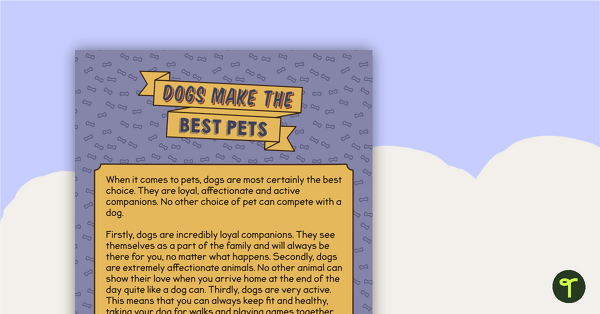
Sequencing Activity - Dogs Make the Best Pets (Persuasive Text)
A sequencing task using a persuasive text.
- Plus Plan
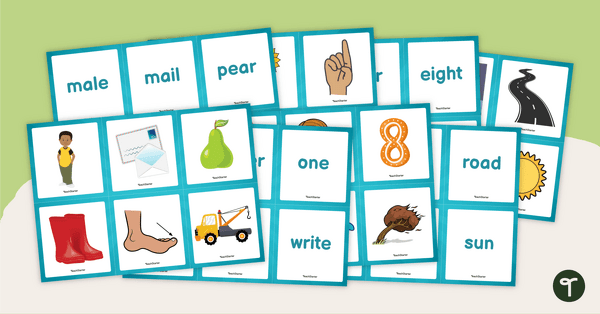
Homophones Match-Up Cards
Teach your students the meanings and spellings of some common homophones with this set of 32 match-up cards.
- Free Plan

Inference vs Prediction Poster
A poster outlining the similarities and differences between inference and prediction.
- Plus Plan

Paragraph of the Week PowerPoint - Persuasive Paragraphs
A Paragraph of the Week PowerPoint presentation to use when setting up this writing strategy in your classroom.
- Plus Plan

Writing Editing Checklist
Get your students using this editing checklist so that no mistake gets left behind!
- Plus Plan

Fact and Opinion Sorting Activity
Use this fact and opinion sort to teach your students the difference between statements of fact and statements of opinion.
- Plus Plan
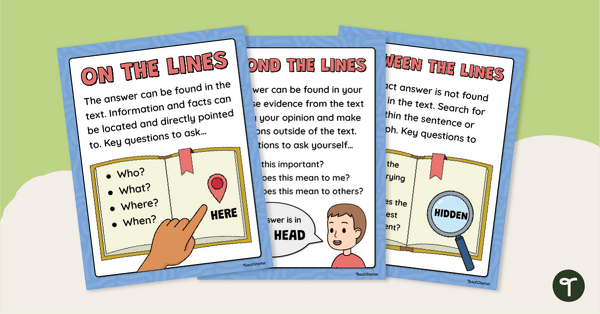
Three Levels of Reading Posters
Teach your students to read beyond the lines, between the lines and on the lines with a set of printable 3 Levels of Reading posters.
- Plus Plan

Koala Information Report – Writing Project
Get your students writing a koala information report using this age-appropriate fact file and writing scaffold.
- Plus Plan

Sequence an Information Report – Cut and Paste Worksheets
Use these information report examples to teach your students about sequencing facts in a logical order.
- Plus Plan

Fact or Opinion? - Digital Learning Activity
Practise identifying, sorting, and writing facts and opinions with an interactive digital learning activity.
- Plus Plan

Language in Persuasive Writing Anchor Chart
Introduce students to the language associated with persuasive writing with a printable persuasive writing anchor chart.
- Plus Plan

Hamburger Paragraph Poster and Worksheet
Teach your students how to correctly structure a paragraph using this hamburger-themed classroom poster and paragraph planning scaffold.
- Plus Plan

Past Tense, Present Tense and Future Tense Posters
Help your students understand verb tense with this set of past, present and future tense poster examples.
- Plus Plan
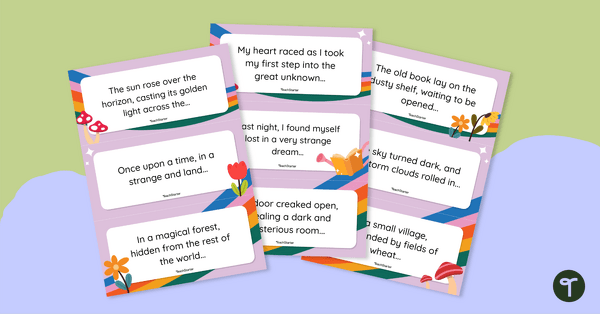
Inspiring Story Starters Task Cards
Get your students writing inspiring stories with this set of story starter task cards.
- Plus Plan

Text Type Structure Poster Display Pack
Display these posters in your room as a visual reminder of the structure of a variety of text types.
- Plus Plan

Apostrophes of Contraction Worksheets
Learn about the apostrophe of contractions with this set of worksheets.
- Free Plan

Free Contractions Student Reference Sheet
Help students remember the different contractions with this contraction student reference sheet.
- Plus Plan

Combining Words - Compound Nouns Worksheet
Combine word parts to build compound nouns with a printable compound word worksheet.
- Plus Plan

Spelling Compound Words Worksheets
See and spell compound words with a pack of printable compound word spelling worksheets.
- Plus Plan

Modal Language Sorting Activity
Explore examples of modal language with your students using this set of 24 sorting cards perfect for your persuasive writing unit.
- Plus Plan
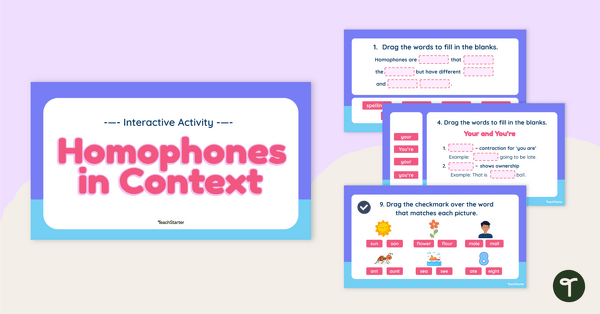
Homophones in Context – Interactive Activity
Review the meanings and spellings of some common homophones with this digital drag-and-drop activity for your vocabulary lessons.
- Plus Plan

Homophones Word Searches
Immerse your students in common homophones with this differentiated set of homophones word searches for your vocabulary lessons.
- Plus Plan

Word Study Lists – Homophones
Introduce your students to the most common homophones with these two sets of comprehensive word lists.
- Plus Plan

Persuasive Device Examples – Cut and Paste Worksheet
Match the persuasive writing techniques with the correct examples using this simple cut-and-paste worksheet perfect for your persuasive writing unit.
- Plus Plan

Year 3 Magazine - What's Buzzing? (Issue 1)
A beautifully designed, 24-page reading magazine specifically designed for Year 3 students.
- Plus Plan

Main Idea and Details Mini-Book
Practise identifying the main idea and supporting ideas in a variety of texts by completing this mini-book.
- Plus Plan

Finding The Main Idea - Comprehension Task (Turtles)
Explore the wonderful world of turtles with this comprehension task focusing on the main idea.
- Plus Plan

Finding the Main Idea Poster
A poster highlighting how to find the main idea when reading a piece of text.
- Plus Plan

Re- Prefix Crossword Puzzle
Review vocabulary skills and boost your students’ knowledge of the “Re-” prefix with a crossword puzzle worksheet.